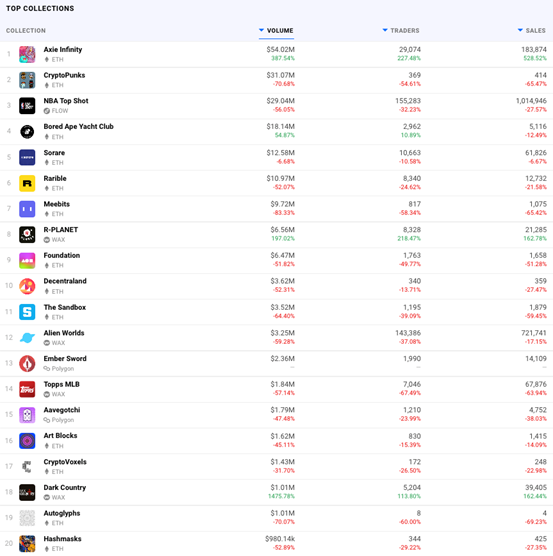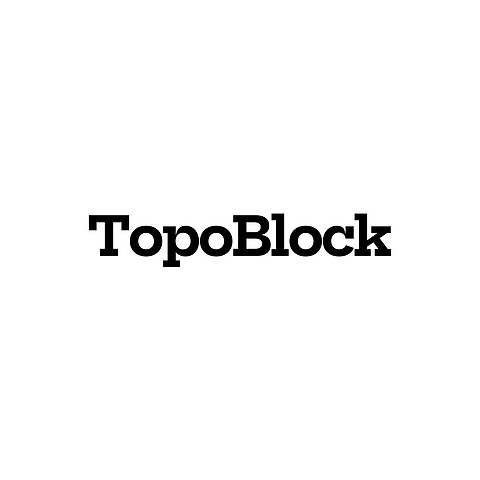Talking about the current ecological development status of NFT public chain
image description

Data source cryptoslam.io
ETH
At present, the most active and oldest NFT public chain ecology is undoubtedly Ethereum. Among the top 10 transactions in May, there are 6 projects based on Ethereum. Classic NFT protocol standards such as ERC721, ERC1155, and ERC998 are all based on Ethereum. At the same time, as shown in the figure below, the gas fee of Ethereum in May has decreased compared to April, but the average transaction fee can still reach about 20 US dollars per transaction, which is still not friendly to high-frequency transactions. The low performance of Ethereum is specifically reflected in the following aspects in the NFT field:
l The cost of minting is extremely high: Sometimes the cost of minting even surpassed the price of NFT itself.
l High transaction fees and slow speed: Most Ethereum-based NFT trading platforms will pay gas fees when buying and selling, and even pay gas fees for off-shelf works. In addition, the transfer speed of the trading platform is also very slow, and it often takes 3-5 minutes for a transfer to be confirmed.
image description

Data source ycharts.com
Polygon
In order to solve the above problems, the NFT ecology on Ethereum thinks of expansion. The Polygon side chain is currently a relatively successful expansion solution for ETH. Polygon relies on technical advantages. The transaction speed of the Dapp on the chain is very fast and the transaction cost is also very low. Each transaction is about 0.00004USD, and Polygon is compatible with EVM and Metamask.
At present, in Polygon’s NFT ecosystem, most NFT projects are migrated from ETH, such as the top NFT trading platform Opensea, the ghost collection game Aavegotchi under the DeFi top lending platform Aave ecosystem, the virtual world platform Decentral Games, game development Animoca's racing game F1 Delta Time and so on. Among them, Aavegotchi, as the NFT project with the largest number of users on Polygon, can still maintain a daily transaction frequency of about 5,000 times in the downward trend of BTC.

However, the Polygon side chain also has certain disadvantages. For example, the cross-chain operation is extremely troublesome and the cross-chain time is very long. It takes about 7 days to return to Ethereum from the matic wallet cross-chain. Currently, all exchanges that support the deposit and withdrawal of the Polygon wallet are AscendEX ( Bitmax) and Okex can save a lot of time and cost for cross-chain operations.
Flow
Flow is a brand new Layer 1 blockchain created by Dapper Labs, the Crypto Kitties development team. The team pioneered the ERC721 NFT standard format, which is the pioneer in the NFT field. In terms of public chain technology, the expansion principle of Flow lies in the node division and pipeline architecture, thus ensuring the high transaction speed and throughput of the entire network.
Of course, the biggest advantage of the Flow public chain at present is its market advantage - Juliu's IP, and the out-of-circle game NBA Top Shot has been occupying the first place in the NFT trading volume rankings since its launch until today. In addition to the NBA, Flow's current heavyweight partners include UFC, NFL, music company Warner Music, well-known game developers Animoca, Ubisoft, SamSung, NFT trading platform Opensea, etc.

But so far, there are still very few projects on Flow, the entire ecosystem has not yet been built, lack of liquidity solutions, and other supporting public chain infrastructure, NBA Top Shot is also slow due to AML/KYC withdrawals. But these problems will be solved one by one sooner or later. For example, Blocto, a multi-chain ecological wallet that just completed fundraising this year, among which Bloctoswap will become the first AMM on the Flow public chain. While the huge wealth effect brought by strong IP, Flow's ecology will also develop better and better driven by funds.
The upcoming NFT public chain--Efinity
Although ETH is the birthplace of many excellent NFT products, due to the low-frequency contract interaction speed of Ethereum and Polygon itself and the expensive transaction fees of Ethereum, neither Ethereum nor Polygon can be said to be the most suitable soil for NFT development. The new NFT-focused public chain Flow has higher throughput and transaction speed. It is technically more suitable for the development of NFT and has strong IP support. However, it cannot be ignored that communication is also needed in the metaverse of the blockchain.
Efinity is a scalable NFT cross-chain network built on Polkadot, built by Enjin, a cutting-edge blockchain technology company. Enjin, the blockchain technology company behind it, was founded in 2009 by Maxim Blagov and Witek Radomski. their first productEnjin Network, and over the next ten years, developto over 20 million gamers worldwide. At the same time, the Enjin team is also the creator of the ERC-1155 NFT standard on Ethereum.
Summarize:
Summarize:
Judging from the current situation, in the short term or even in the medium and long term, Ethereum will still be the smart contract platform that has the strongest empowerment effect on the NFT concept. The mainstream NFT protocols are also based on the Ethereum standard. However, the Ethereum Due to the slow transaction speed and high gas fees in the market, many NFT projects began to seek other outlets, such as the explosion of NFT projects on BSC some time ago. Thanks to the scalability of Ethereum, other public chains and side chains have seized the opportunity at this critical point in the NFT boom. For example, Ploygon, which is compatible with the Ethereum Virtual Machine EVM, relies on its fast transaction speed. The advantage of low transaction costs has become the leader in the Ethereum expansion solution track; at the same time, public chains such as FLOW and Efinity are also working hard to solve the needs of cross-chain NFT. People can issue NFT on different chains and carry out NFT Asset interaction. In addition, as the Polkadot launch schedule approaches, the multi-chain era will be getting closer and closer to us.
For the next stage of NFT planning, seeking cross-chain will become one of the important choices for its development. At that time, after solving the constraints faced by NFTs on Ethereum such as high transaction costs, creation costs, and transaction speeds, developers and creators will surely create new use cases for NFTs beyond our imagination.



